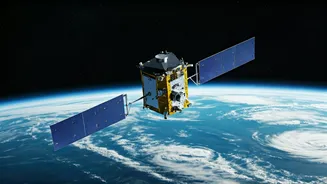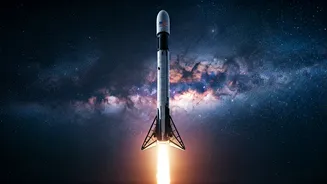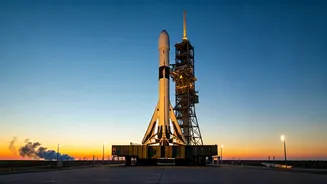Launching Into Orbit
The Falcon 9 rocket, departing from Vandenberg Space Force Base in California, successfully launched the Sentinel-6B satellite into its intended orbit.
This happened at 12:21 a.m. Eastern Time. The deployment into orbit occurred approximately 57 minutes after the rocket took off. Sentinel-6B is part of a joint program involving NASA, the European Space Agency (ESA), the European Commission's Copernicus Earth observation system, NOAA, Eumetsat, and the French space agency CNES. The United States provided a microwave radiometer and the launch, while Europe contributed the spacecraft and its radar altimeter. This launch is a continuation of a vital mission and is critical for obtaining continuous data.
A Record of Data
This recent launch serves to extend a record of sea level measurements that dates back more than three decades. The original record was initiated by the TOPEX-Poseidon mission, a joint venture between NASA and CNES, which was launched in 1992. The data collected plays a vital role in climate monitoring. Over the past three decades, satellite monitoring has indicated that sea levels have been rising at an average rate of about 3 millimeters per year. Recently, this rate has increased to approximately 4 millimeters per year. This sustained data collection is crucial for understanding the long-term trends of sea level rise.
Twin Satellites Working
Sentinel-6B, built in parallel with its twin, Sentinel-6A, also known as Sentinel-6 Michael Freilich, is designed to ensure uninterrupted data collection. The two satellites were constructed by Airbus Defence and Space. Sentinel-6B was taken out of storage a year before the launch for testing and launch preparations. Initially, Sentinel-6B will operate in the same orbit as Sentinel-6A, trailing it by roughly 30 seconds. This setup enables cross-correlation of data from both spacecraft before Sentinel-6B takes over primary global sea-level observations, which is expected to occur in about a year. Both of the satellites are identical, demonstrating the importance of maintaining data consistency.
Collaboration and Contributions
The Sentinel-6 program is a collaborative project between various international entities. NASA contributed approximately $500 million to the overall Sentinel-6 program, with Europe's share estimated at 400 million euros ($465 million) by ESA. The launch and the U.S.-provided instrument were a part of the contribution. The European contribution includes the spacecraft itself and the radar altimeter. The Sentinel-6B mission expands on the existing efforts from multiple agencies.
Data's Multiple Uses
The data collected by Sentinel-6B has significant implications for both climate monitoring and weather forecasting. The measurements taken by the satellite are valuable for predicting weather patterns, particularly regarding the development and intensification of hurricanes. Energy stored in the oceans is a key factor in tropical storm formation. Therefore, Sentinel-6B's measurements enhance weather prediction models. In addition to their contribution to weather prediction and climate research, the data gathered by the satellites is also used by SpaceX. This data contributes to models that improve both launch and recovery weather conditions. Real-time data from droneships and real-time data from the satellites help provide the best picture of weather conditions.
Future Uncertainties
Plans for future Sentinel-6 missions are currently uncertain. While there were discussions about a Sentinel-6C satellite, NASA's fiscal 2026 budget proposal indicated that the agency would not continue its contributions to that spacecraft. This proposal included the cancellation of several Earth science missions. However, the exact outcomes are pending. ESA is actively working with NASA to ensure the provision of the U.S. instrument for Sentinel-6C. The final decision on the U.S. budget will determine the path forward for the project.













